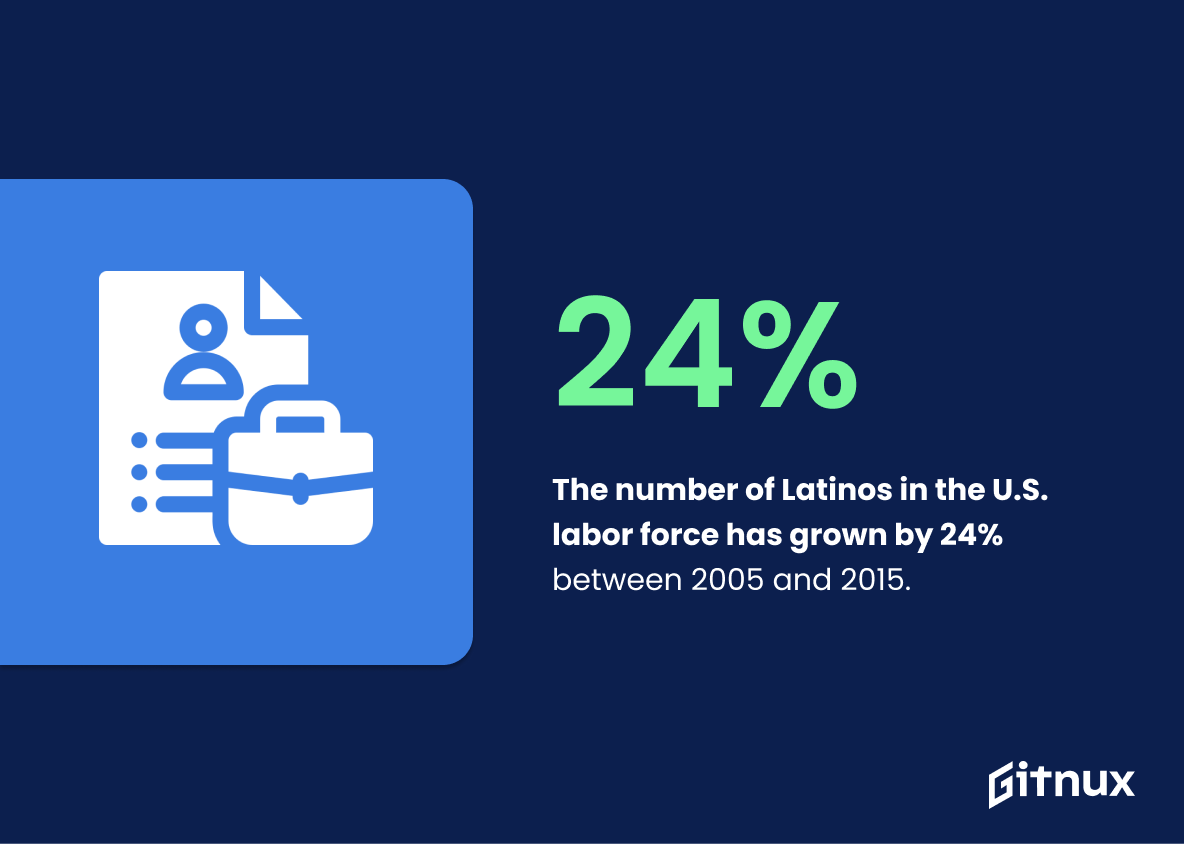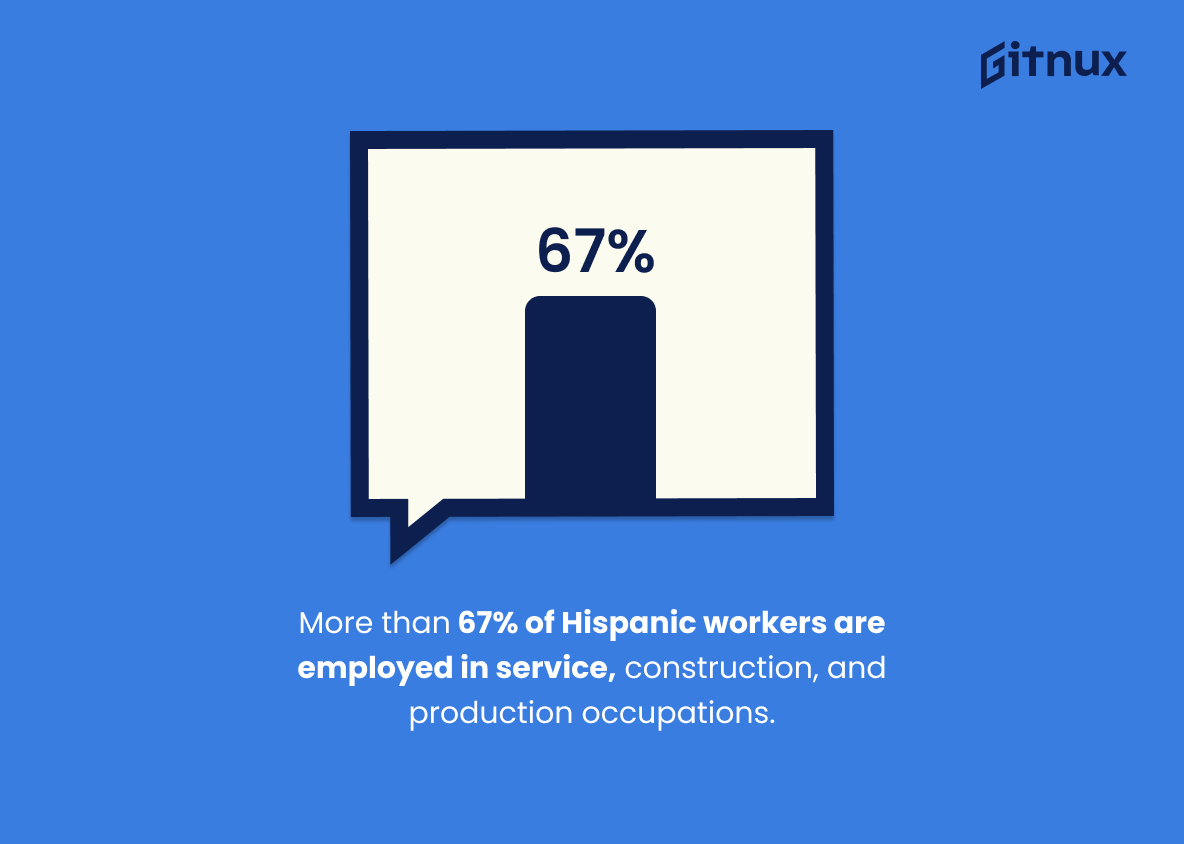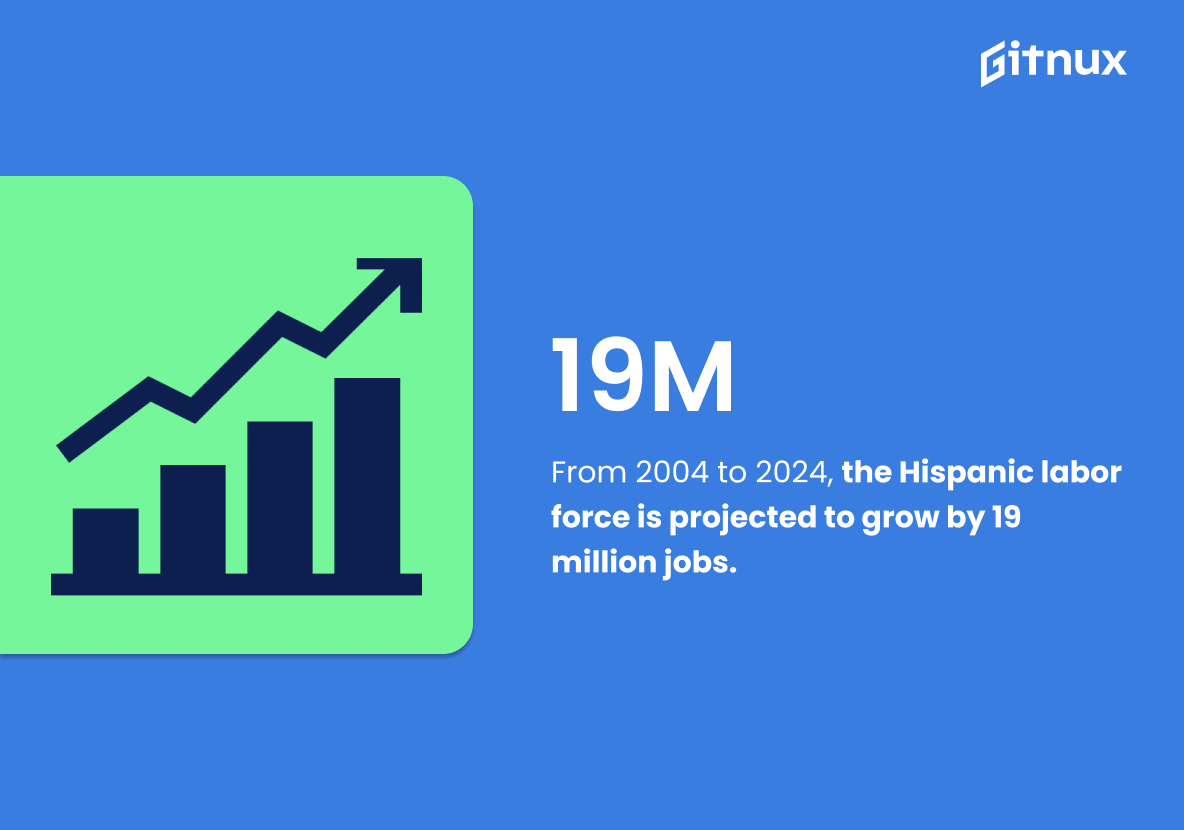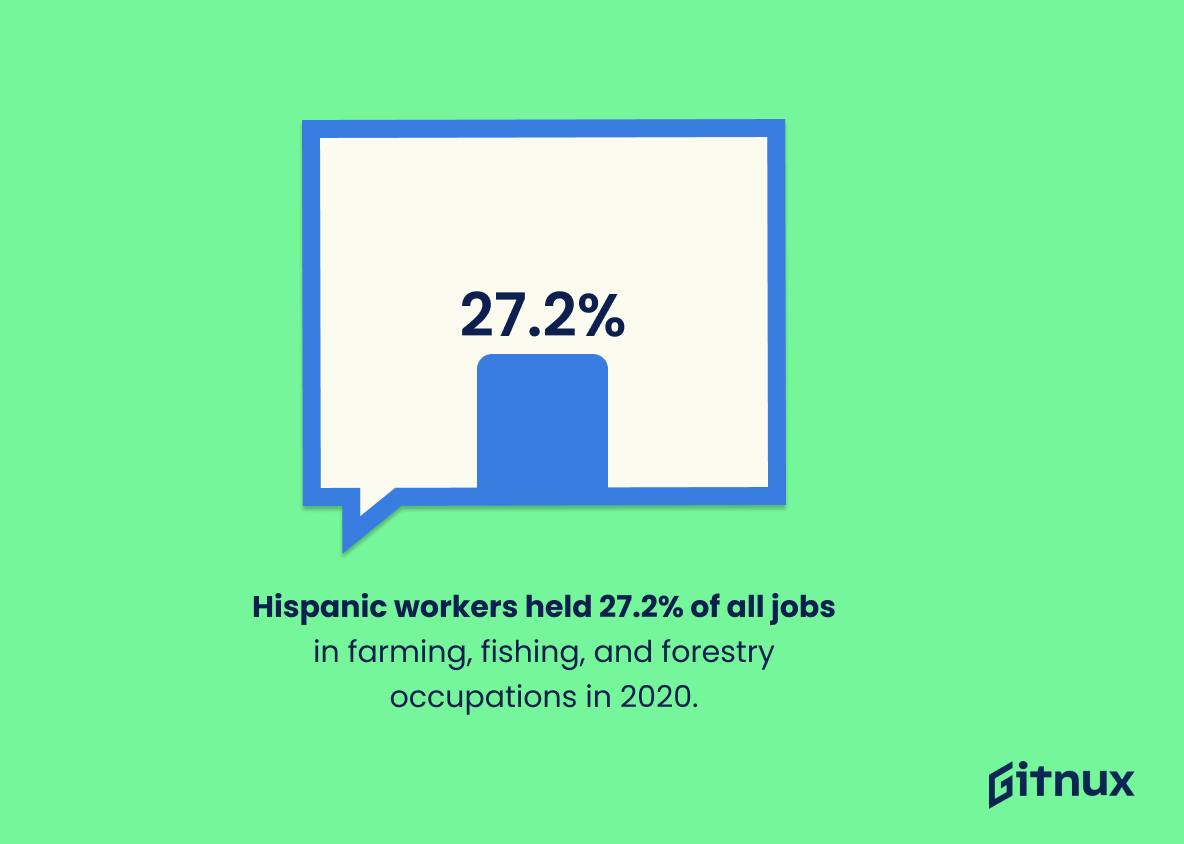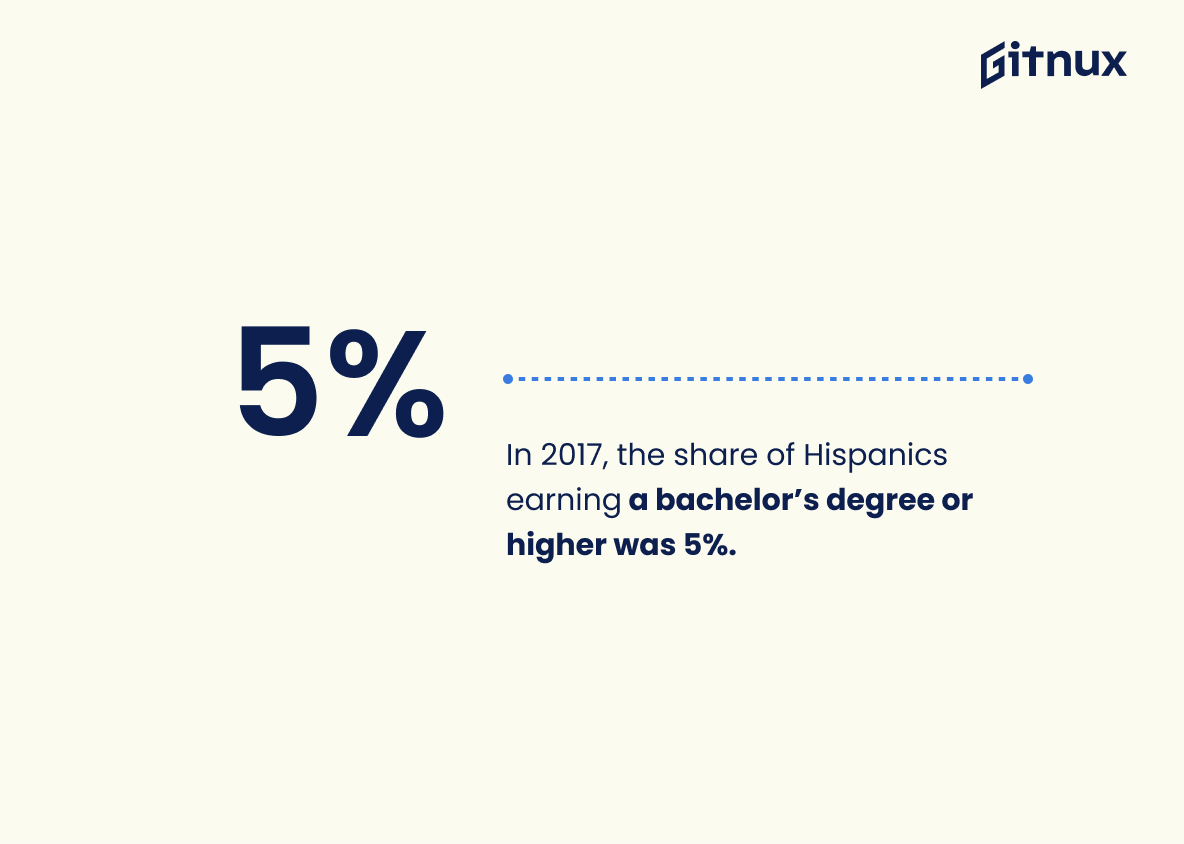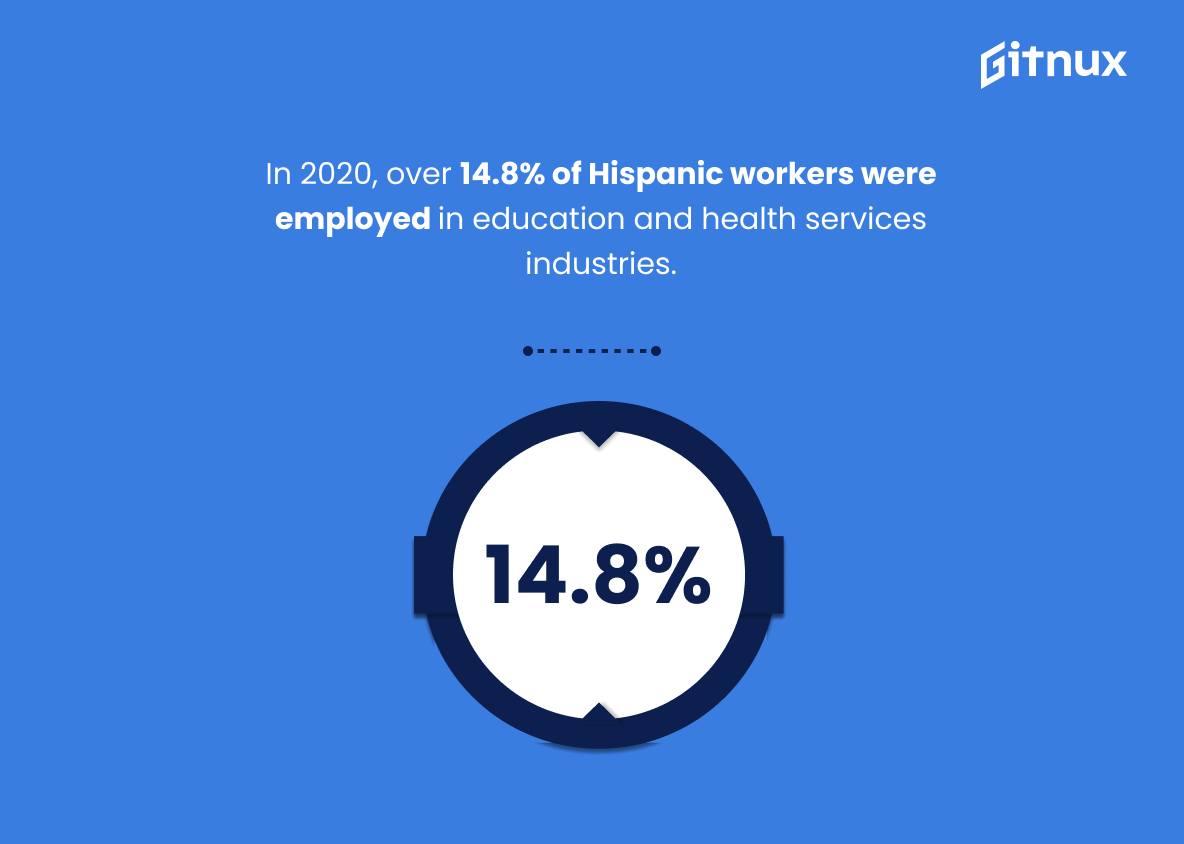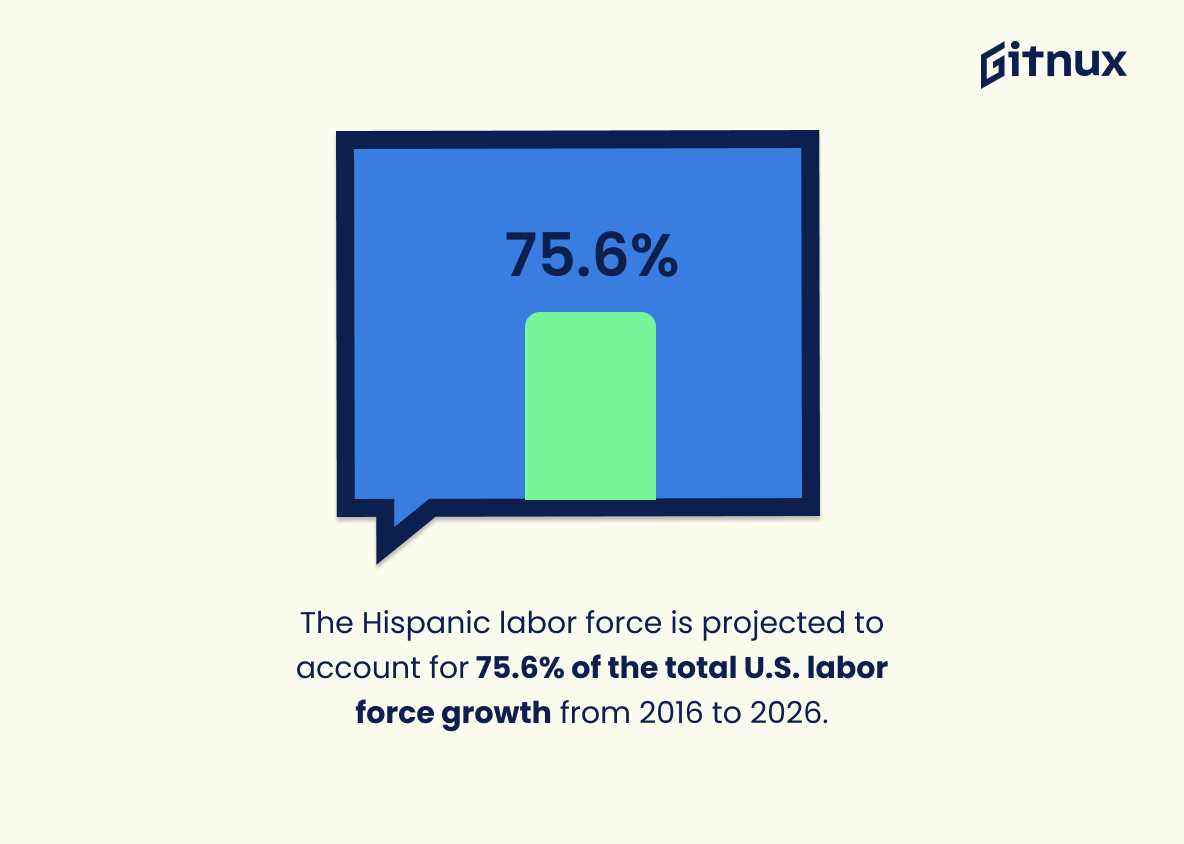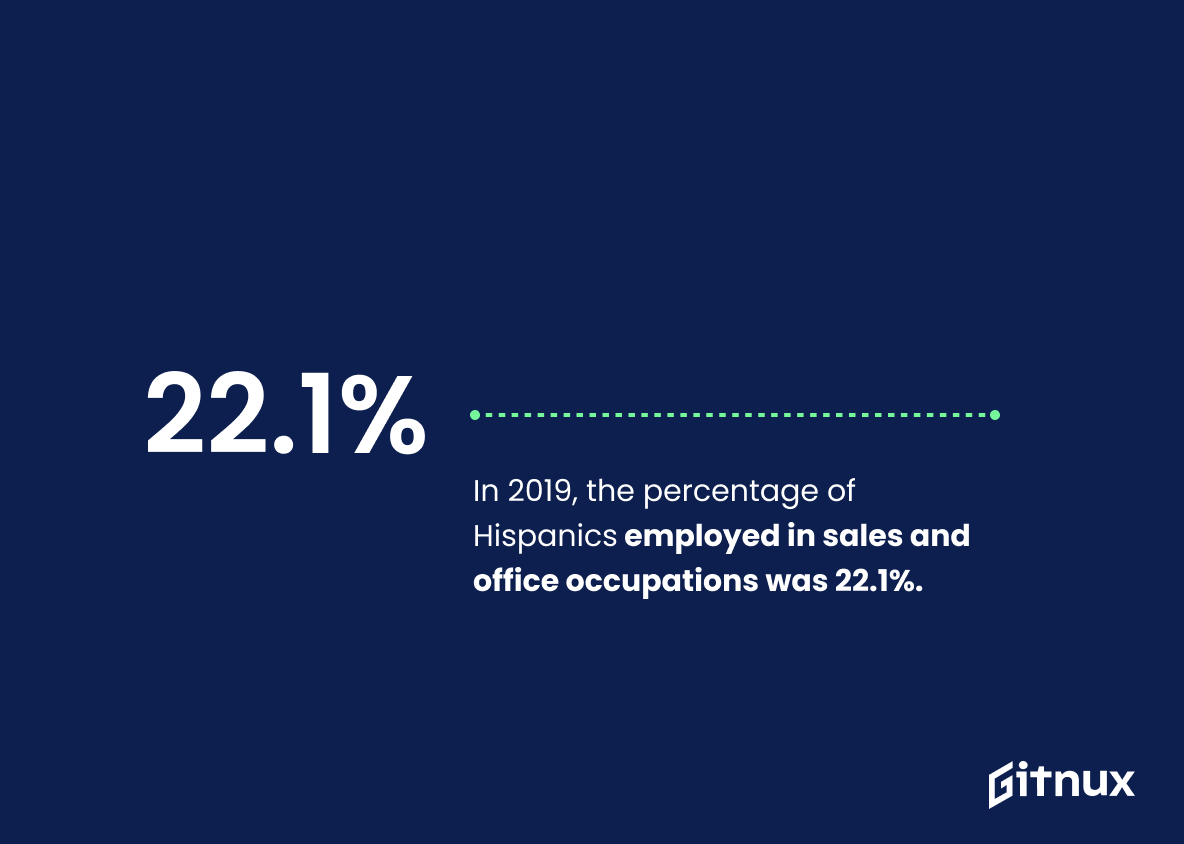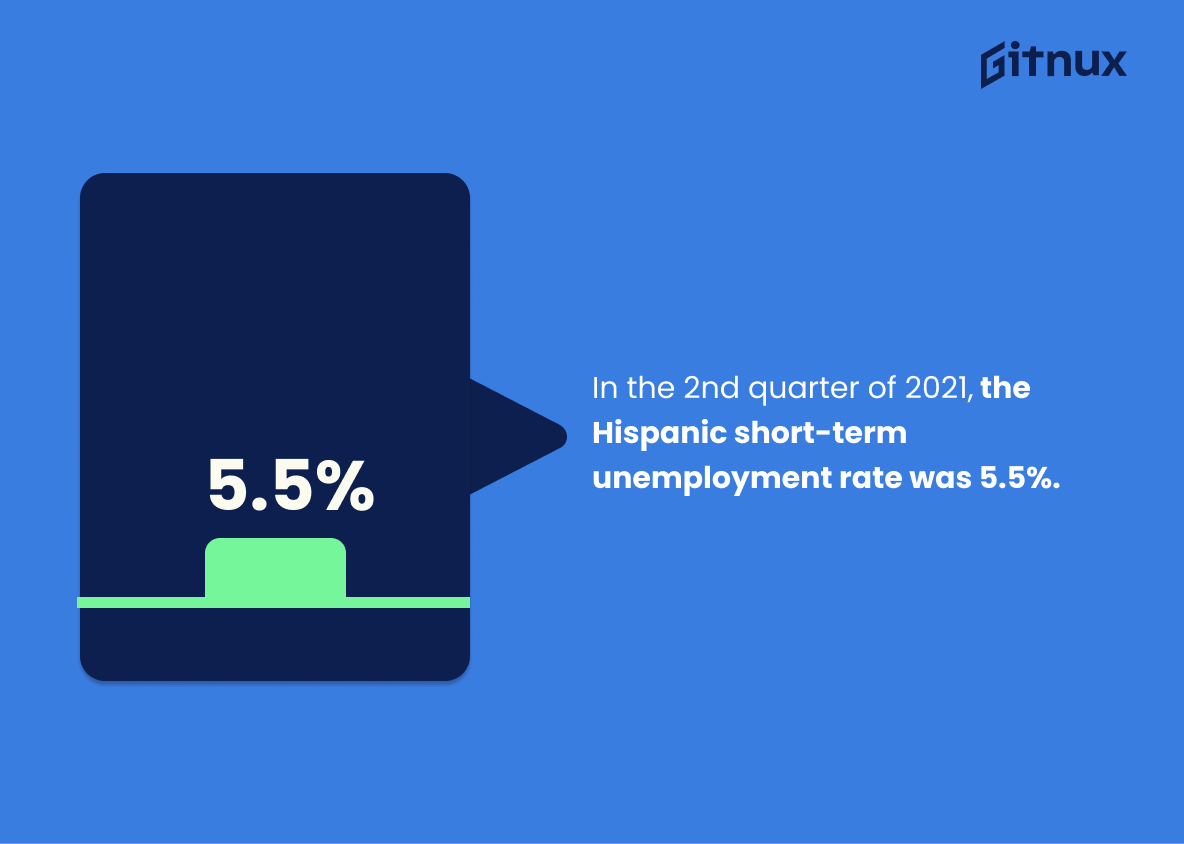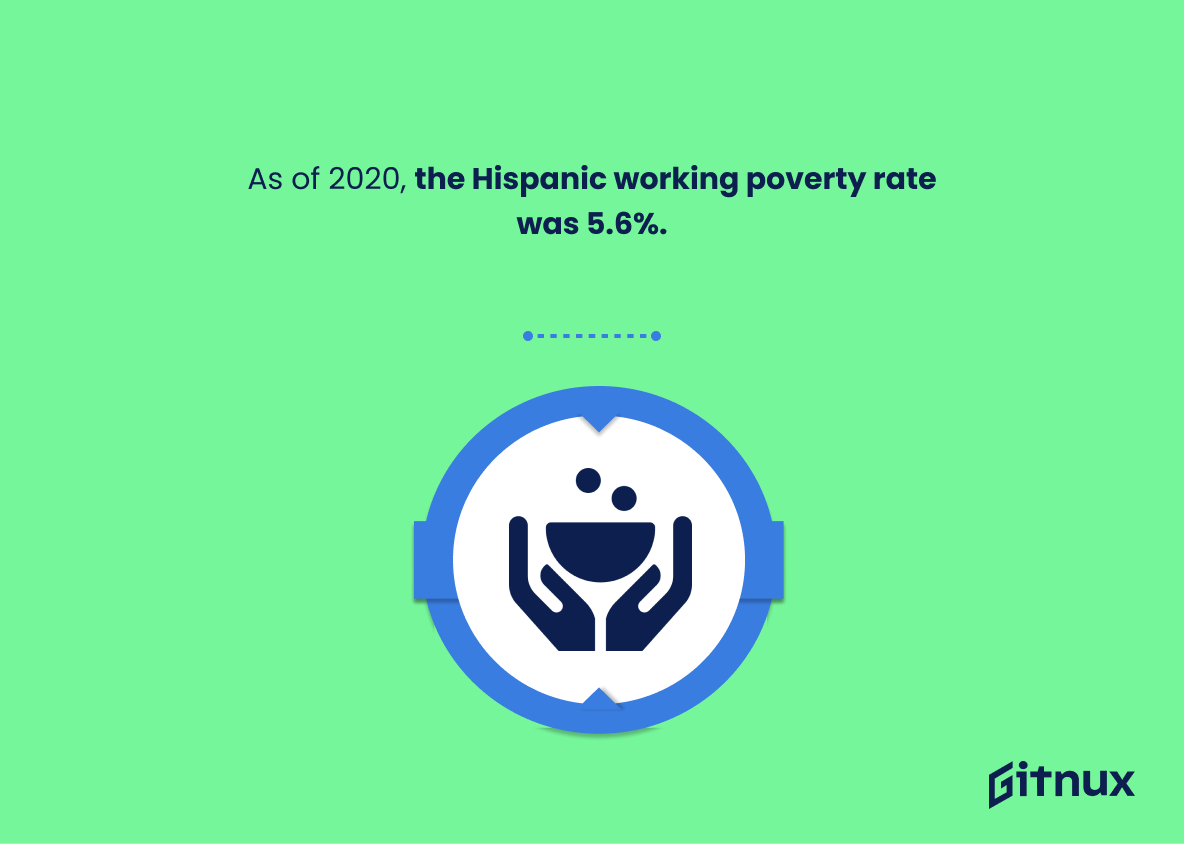The employment statistics of Latinos in the United States are an important indicator of economic health and progress. This blog post will explore 20 different statistics related to Latino employment, including their labor force participation rate, median usual weekly earnings, job sectors they work in, unemployment rates for Hispanic or Latino individuals, and more. We’ll also look at how these numbers have changed over time and what trends can be seen from them. By understanding these figures better we can gain a deeper insight into the current state of affairs for this demographic group as well as its potential future prospects.
This statistic is a powerful indicator of the success of Latinos in the United States in terms of employment. It shows that despite the challenges they face, a majority of Latinos are able to find and maintain employment. This statistic is a testament to the hard work and dedication of the Latino community and serves as a reminder of the importance of providing equal opportunities for all.
In October 2020, the unemployment rate for Hispanic or Latino individuals was 8.8%.
The statistic that in October 2020, the unemployment rate for Hispanic or Latino individuals was 8.8% is a stark reminder of the disparities that exist in the labor market. This figure highlights the need for greater access to job opportunities and resources for the Latino community. It also serves as a call to action for employers to create more equitable hiring practices and to invest in the development of Latino employees.
Latino Employment Statistics Overview
The number of Latinos in the U.S. labor force has grown by 24% between 2005 and 2015.
This statistic is a testament to the increasing presence of Latinos in the U.S. labor force, highlighting the importance of their contributions to the economy. It is a powerful reminder of the progress that has been made in the past decade, and serves as a reminder of the potential for further growth in the years to come.
More than 67% of Hispanic workers are employed in service, construction, and production occupations.
This statistic is a telling indication of the disproportionate burden of labor that Hispanic workers are shouldering. It highlights the fact that the majority of Hispanic workers are employed in service, construction, and production occupations, which are often lower-paying and more physically demanding than other occupations. This statistic is a stark reminder of the need for greater economic opportunities for Hispanic workers.
In 2019, Hispanic women were more likely to be employed in office and administrative support occupations compared to other racial or ethnic groups.
This statistic is a powerful reminder of the importance of Hispanic women in the workforce. It highlights the fact that Hispanic women are making a significant contribution to the economy, particularly in office and administrative support occupations. This statistic is a testament to the hard work and dedication of Hispanic women, and it serves as a reminder that their contributions should be recognized and celebrated.
As of 2018, the median usual weekly earnings of full-time Hispanic workers was $702.
The statistic that the median usual weekly earnings of full-time Hispanic workers was $702 in 2018 is a powerful indicator of the economic standing of the Latino community. It speaks to the financial stability of the group, and the ability of its members to provide for themselves and their families. This statistic is a reminder that the Latino community is an integral part of the American workforce, and that their contributions should be recognized and valued.
In 2020, the labor force participation rate for Hispanic women was 55.5%, while for Hispanic men, it was 77.2%.
This statistic is a powerful indicator of the disparities between Hispanic men and women in the labor force. It highlights the fact that Hispanic women are significantly less likely to be employed than their male counterparts, and this discrepancy is an important issue to address. By bringing attention to this statistic, we can begin to understand the challenges that Hispanic women face in the workforce and work towards creating more equitable opportunities for them.
From 2004 to 2024, the Hispanic labor force is projected to grow by 19 million jobs.
This statistic is a powerful indicator of the potential for growth in the Latino workforce. It speaks to the immense potential of the Latino community to contribute to the economy and to the labor force. It also highlights the importance of investing in the Latino community to ensure that they are able to take advantage of the opportunities available to them. This statistic is a reminder that the Latino community is an integral part of the American economy and should be supported and encouraged to reach their full potential.
Hispanic workers held 27.2% of all jobs in farming, fishing, and forestry occupations in 2020.
This statistic is a powerful reminder of the significant role that Hispanic workers play in the farming, fishing, and forestry industries. It highlights the importance of recognizing and supporting the contributions of Latino workers in these industries, and the need to ensure that they have access to the same opportunities and resources as other workers.
In 2017, the share of Hispanics earning a bachelor’s degree or higher was 5%.
This statistic is a telling indication of the educational attainment of Hispanics in 2017. It speaks to the opportunities available to Hispanics in terms of higher education, and the potential for them to gain the skills and knowledge necessary to pursue higher-paying jobs. This statistic is an important factor to consider when discussing Latino employment statistics, as it can provide insight into the potential for Hispanics to access better job opportunities.
In 2017, 15.5% of U.S. businesses were Hispanic-owned.
This statistic is a powerful indicator of the impact that Hispanic-owned businesses have had on the U.S. economy. It shows that despite the challenges that Latinos face in the job market, they are still able to create and sustain successful businesses. This statistic is a testament to the resilience and entrepreneurial spirit of the Latino community, and it is an important reminder of the importance of supporting Latino-owned businesses.
In 2020, over 14.8% of Hispanic workers were employed in education and health services industries.
This statistic is a telling indication of the impact that Hispanic workers have had on the education and health services industries. It highlights the importance of Hispanic workers in these industries, and the need for continued support and investment in these sectors to ensure that Hispanic workers are able to continue to contribute to the success of these industries.
As of 2019, around 8.7% of Hispanics held jobs in management, business, and financial occupations.
This statistic is a telling indication of the current state of Latino employment in the United States. It reveals that, despite making up a significant portion of the population, Hispanics are still underrepresented in management, business, and financial occupations. This statistic serves as a reminder that there is still much work to be done in order to ensure that Latinos have equal access to these types of jobs.
The Hispanic labor force is projected to account for 75.6% of the total U.S. labor force growth from 2016 to 2026.
This statistic is a powerful indicator of the importance of the Hispanic labor force in the U.S. economy. It highlights the fact that the Hispanic population is expected to be the driving force behind the growth of the U.S. labor force over the next decade, accounting for the majority of the growth. This is an important statistic to consider when discussing Latino employment statistics, as it demonstrates the potential for the Hispanic population to have a significant impact on the U.S. economy.
In 2019, the percentage of Hispanics employed in sales and office occupations was 22.1%.
This statistic is a telling indication of the current state of Latino employment in the United States. It reveals that, despite making up a significant portion of the population, Hispanics are still underrepresented in sales and office occupations. This statistic serves as a reminder that there is still much work to be done in order to ensure that Latinos have equal access to employment opportunities.
In the 2nd quarter of 2021, the Hispanic short-term unemployment rate was 5.5%.
The statistic that ‘In the 2nd quarter of 2021, the Hispanic short-term unemployment rate was 5.5%’ is a crucial indicator of the current state of Latino employment. It provides a snapshot of the economic situation of the Latino community, and can be used to assess the progress of initiatives to improve employment opportunities for Latinos. This statistic is a valuable tool for understanding the challenges faced by the Latino community and for developing strategies to address them.
As of 2020, the Hispanic working poverty rate was 5.6%.
This statistic is a stark reminder of the economic disparities that exist between Hispanic and non-Hispanic workers. It highlights the need for greater access to employment opportunities and resources for the Hispanic community, as well as the need for more equitable wages and benefits. It is a call to action for employers, policy makers, and the public to work together to ensure that all workers have the opportunity to succeed.
The average hourly wage for Hispanics in the US was $16.87 in 2020.
This statistic is a powerful indicator of the economic disparities faced by Hispanics in the US. It highlights the fact that, despite making up a significant portion of the US workforce, Hispanics are still earning significantly less than their non-Hispanic counterparts. This statistic serves as a reminder that there is still much work to be done to ensure that all members of the US workforce are treated fairly and equitably.
In 2019, 56% of employed Hispanic unauthorized immigrants held service and construction/maintenance jobs.
This statistic is a telling indication of the employment opportunities available to Hispanic unauthorized immigrants. It highlights the fact that the majority of employed Hispanic unauthorized immigrants are employed in service and construction/maintenance jobs, which are often lower-paying and lack benefits. This statistic is a reminder that there is still a need to create more equitable employment opportunities for Hispanic unauthorized immigrants.
Conclusion
The data presented in this blog post paints a comprehensive picture of the employment statistics for Latinos in the United States. As of September 2021, 68.2% of Latinos were employed and 8.8% were unemployed as reported by the Bureau of Labor Statistics (BLS). The number of Latino workers has grown significantly over time, with 24% growth between 2005 and 2015 according to Pew Research Center’s analysis.
In terms of occupation type, more than 67% are employed in service-related occupations such as construction or production while 50.3 % are working natural resources related jobs like maintenance or construction work according to Macrotrends’ report on Hispanic men’s job fields in 2019 . Additionally, 56 percent held service and construction/maintenance jobs among unauthorized immigrants that same year per Pew Research Center’s study on demographics from 2020 . In comparison to other racial groups, Hispanic women have higher rates when it comes to office support roles at 22%.
When looking at wages earned by Hispanics across different industries , they earn an average hourly wage rate $16.87 which is lower compared to other ethnicities but still above poverty level income ($15) based off BLS reports from 2020 . Furthermore their labor force participation rate was 55%, slightly below that for males 77%. This could be attributed partly due to lack access education opportunities since only 5 percent hold bachelor degrees or higher degree levels according 2017 research conducted by PEW research center.. Lastly projections show that there will be 19 million new positions created within 2024 making up 75 percent total US labor force growth during 2016 – 2026 period based off BLS estimates from 2018 onwards..
Overall these stats demonstrate how much potential exists amongst Latinx communities despite facing challenges such as low educational attainment levels and limited economic mobility options available today
References
0. – https://www.bls.gov
1. – https://www.dallasfed.org
2. – https://www.pewresearch.org
3. – https://www.mbda.gov
